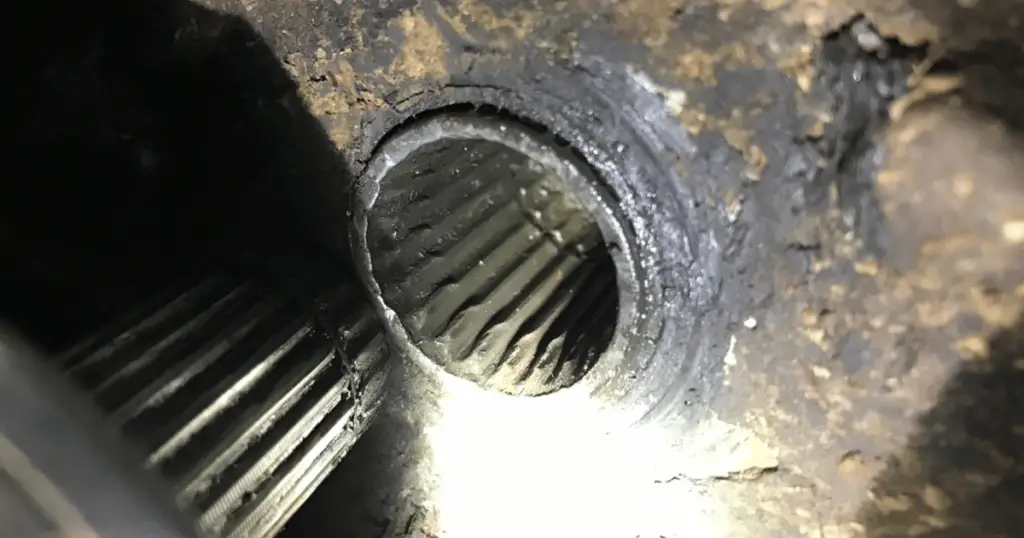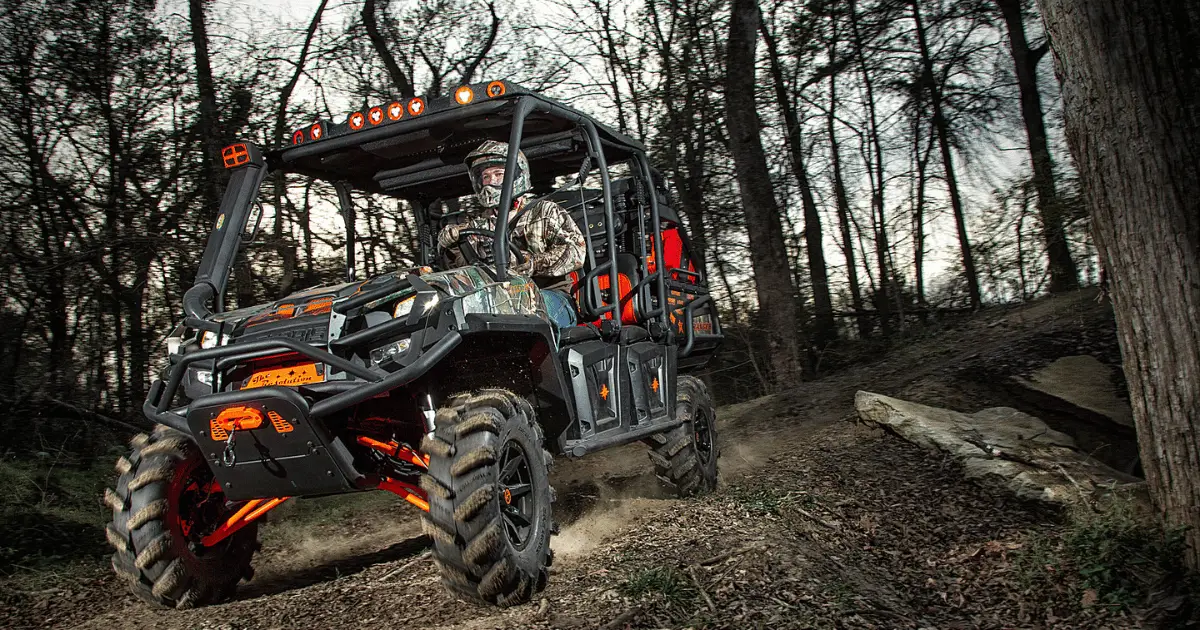So, you’ve been hearing that ominous clunking from the back of your Polaris Ranger and wondering what the mischief is going on? Or maybe you’ve noticed it’s not quite handling the way it should, especially on those tight turns. Chances are, you’re facing the all-too-common rear differential problems that Ranger owners sometimes encounter. This article is your handy companion through the muddy waters of differential diagnostics and repair, providing you the insights and fixes you need to get your trusty vehicle back to gliding over trails like it was meant to. Let’s tackle those Polaris Ranger rear differential problems together and ensure your ride is as smooth and reliable as ever.
Understanding the Polaris Ranger Rear Differential

Function and Importance of the Rear Differential
When you’re tackling tough terrain in your Polaris Ranger, the rear differential plays a crucial role in keeping you moving smoothly. It’s the mechanical wizard that allows the wheels on the same axle to rotate at different speeds, which is essential when taking turns. Without it, the tires would rub against the ground, causing undue wear and making handling a nightmare. Essentially, the rear differential is the unsung hero that balances the act between power and poise in your off-road adventures.
Components of the Polaris Ranger Rear Differential
Diving into the anatomy of your Polaris Ranger’s rear differential, you’ll find a collection of gears and bearings that work in harmony. There’s the pinion gear that connects with the driveshaft, and the ring gear that is attached to the differential case—this is what your wheels are ultimately connected to. Inside, you have the spider gears that allow the wheels to rotate at those differing speeds, and bearings and seals keeping everything in line and leak-free.
The Role of Differential Fluid in Maintaining Rear Differential Health
Imagine your rear differential as an athlete—it needs to stay lubricated to perform at its best. That’s where differential fluid comes in, acting as the essential lubricant to prevent the gears from grinding each other into oblivion. It keeps the components cool and reduces friction, which is vital to prolong the life of the rear differential. Neglecting the fluid is like skipping warm-ups before a sprint; not advisable if you value long-term performance.

Typical Lifespan and Wear-and-Tear of Differential Parts
Just like anything mechanical, the parts in your Polaris Ranger’s rear differential will wear over time. With regular use, especially under load or in harsh conditions, bearings, gears, and seals can start to show their age. Some parts may last the life of the vehicle, while others might need attention after a few thousand miles. It all boils down to how you use and care for your Ranger.
Common Symptoms of Rear Differential Problems
Unusual Noises Coming from the Rear Differential
Listen up—your Polaris Ranger might be trying to tell you something. If you hear whining, howling, or clunking from the rear end, particularly when you accelerate or decelerate, it could be singing the blues of a troubled differential. These sounds are not part of the normal off-road soundtrack and should be your cue to investigate further.
Difficulty in Handling or Strange Behavior in Turns
When your Ranger starts acting out during turns, handling as if it has a mind of its own, it’s a red flag. If the differential isn’t allowing the wheels to spin at different speeds as needed in a turn, you’ll feel resistance or even skipping from the rear tires. This isn’t just annoying; it’s a warning sign that something’s up with the differential that needs attention.
Vibrations or Wobbling during Operation
A healthy Polaris Ranger should provide a stable ride, even off-road. If you’re feeling vibrations or a wobble that you can’t attribute to the terrain, it may be an imbalance or a problem within the differential. Don’t brush it off—vibrations can escalate into bigger issues quickly.
Visible Leaks and Differential Fluid Loss
Keep an eye on the ground where you park your Ranger. Puddles or drips of thick oil underneath the rear axle area can spell trouble. A leaking differential is losing its lifeblood, and without enough fluid, the internal parts can get damaged rapidly. Timely intervention is key.
Related to this section: Worst Polaris Ranger Years to Avoid (+The Best)
Diagnosing Polaris Ranger Rear Differential Issues
Performing a Visual Inspection for Wear or Damage
Like a detective, you’ll want to look for clues. Check for signs of damage such as oil on the outside of the differential casing, or metal shavings that might suggest internal issues. Wear can be subtle, so be thorough in your inspection.
Checking Differential Fluid Levels and Quality
Grab a rag and pull the fill plug on the differential case. The level and condition of the fluid can tell you a lot. If it’s too low, or if it’s filled with metal particles, that’s evidence of trouble. The fluid should be clear, without any burnt or distinctively bad smell. Anything to the contrary, and you’ve got a suspect on your hands.
Listening for Abnormal Sounds During Operation
Sometimes, problems make themselves heard. Take your Ranger for a spin, with a keen ear towards the rear. Any unusual noises, as mentioned earlier, should be investigated. Noises can be intermittent, so pay attention over various speeds and conditions.
Conducting a Test Drive to Assess Performance
Feel out the performance of your Ranger during a controlled test drive. Watch out for handling quirks, vibrations, or noises that deviate from the norm. Take different types of turns and drive over varied terrains to fully assess the situation.
Top Reported Problems with the Polaris Ranger Rear Differential
Premature Wear of Gears and Bearings
Some Ranger owners have faced the frustration of gears and bearings wearing out sooner than expected. This can be caused by heavy use, insufficient lubrication, or simply a manufacturing flaw. It’s an annoyance that can lead to more significant repairs if not addressed early.
Seal Failures Leading to Fluid Leaks
Seals in the rear differential ensure that the precious fluid stays where it’s needed. However, they can fail, leading to leaks. A dry differential is a recipe for disaster; thus, replacing seals at the first sign of a leak can save you a bigger headache down the road.
Axle and CV Joint-related Differential Damage
The axles and CV joints are interconnected with the differential, and troubles with these components can affect differential performance. Be it due to impact damage or wear and tear, compromised axles and CV joints can mean differential drama.
Differential Housing Cracks and Structural Damage
Although it’s built tough, the differential housing can crack, especially if you’re often tackling extreme conditions. Such structural damage can lead to fluid leaks and expose the internal components to dirt and debris, putting the whole system at risk.
With all of this in mind, I’ll ask you the next question I think you should consider: How many miles will a Polaris Ranger last?

Preventive Maintenance to Avoid Rear Differential Problems
Regular Inspection and Fluid Replacement Schedules
Routine checks and fluid changes are like health check-ups for your differential. Stick to a maintenance schedule that reflects how hard you run your Ranger. More intense use equals more frequent checks. It’s as simple as that.
Upgrading to High-Quality Differential Fluid
Not all fluids are created equal. Investing in high-quality differential fluid can make a difference in longevity and performance. Look for fluids that are designed to withstand the extreme pressures and temperatures your off-road thrills subject the differential to.
Prompt Replacement of Worn Seals and Bearings
It pays to be proactive. Replacing seals and bearings at the first sign of deterioration can prevent more complex problems. Think of it as nipping potential disasters in the bud.
Importance of Proper Driving Habits to Reduce Stress on Differential
How you drive can accelerate wear on your differential or help preserve it. Avoid aggressive starts, stops, and cornering. Driving considerately goes a long way in extending the life of mechanical components, not to mention it’s safer for you and others on the trails.
Step-by-Step Guide to Fixing Common Differential Problems
How to Change the Differential Fluid
Changing the differential fluid is one maintenance task you can tackle. First, make sure your Ranger is on a level surface. Drain the old fluid by removing the drain plug, then replace the plug and refill through the fill hole with the specified amount and type of fluid. Finally, replace the fill plug, and you’re good to go.
Replacing Seals and Gaskets
If a seal is causing a leak, you’ll need to remove the axle to get to it. Clean the area thoroughly, remove the old seal, and gently install the new one, ensuring a proper fit. Gaskets on the differential case should be replaced in a similar meticulous manner to prevent future leaks.
Bearing Replacement Procedures
Bearing replacement is a bit more advanced. You’ll need to disassemble parts of the differential, which might be best left to professionals if you’re not mechanically savvy. However, if you’re up for it, make sure to have a service manual handy and take your time to replace the bearings correctly.
Dealing with Axle and CV Joint Complications
Axle and CV joint issues might require pulling out the entire axle. Check for wear or damage and replace the parts as needed. Reinstall everything carefully, ensuring all components are properly greased and torqued to the manufacturer’s specifications.
Another Ranger problem to know about: Polaris Ranger Overheating Solutions and Radiator Issue Fixes
When to Seek Professional Help for Differential Repairs
Complexity of Differential Repairs and Rebuilds
Differential repairs can get complex, and if you’re not confident in your mechanical skills, there’s no shame in seeking professional help. A qualified mechanic will have the tools and knowledge to handle the job efficiently.
Cost-Benefit Analysis of DIY vs. Professional Repairs
Weigh the costs and benefits before diving into a repair. While DIY can save money, mistakes can be costly. Sometimes, the assurance of a professional repair is worth the extra bucks.
Finding a Trusted Mechanic or Service Center
Look for a mechanic or service center with experience in Polaris Ranger repairs. Personal recommendations, online reviews, and professional certifications can guide you to a trusted service provider.
What to Expect during a Professional Differential Service
A professional service should include a thorough inspection, replacement of fluids and any worn parts, and a test of the differential’s operation. Clear communication about the repairs and costs is also a sign of a reputable mechanic.
Check engine codes you should know about: Full Guide To Identifying Polaris Ranger Check Engine Codes
Common Misconceptions about Rear Differential Upkeep and Repairs
Myths About Differential Fluid Changes
Some believe differential fluid doesn’t need changing—this is false. Regular changes are essential for the longevity of the rear differential.
Misunderstanding Symptoms of Differential Issues
It’s easy to attribute differential problems to other vehicle issues. Understanding specific symptoms can lead to timely and accurate diagnoses.
Oversights in Differential Maintenance Intervals
Skipping or stretching out maintenance intervals can lead to premature wear and tear. Always follow the recommended schedule for your vehicle’s usage.
The False Economy of Delaying Repairs
Putting off repairs to save money can lead to more costly fixes down the line. Addressing issues promptly can help avoid more significant damage and expense.

Leave a Reply